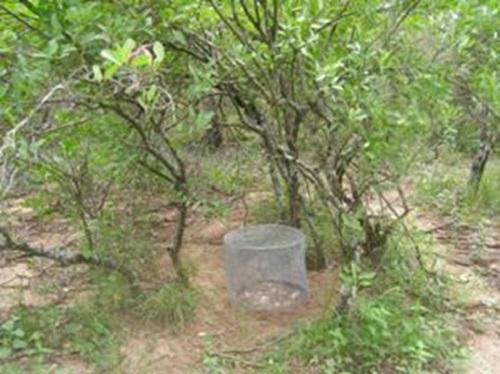Andrés Tálamo
Our objective is to investigate whether shrubs facilitate the establishment and survival of seedlings of both quebracho species, and how one of the most common land uses (cattle grazing) affect the process.

Full shade of shrub and small herbivores excluded treatment.
During the first phase of the project (1st and 2nd RSG) we could establish that the regeneration of the two most important tree species in Semiarid Chaco, quebracho blanco (Aspidosperma quebracho-blanco) and quebracho colorado (Schinopsis lorentzii), is low independent of the forest use: less than three seedlings per 100 m2. Therefore the question of which are the natural regeneration mechanisms of these species arises.
Our objective is to investigate whether shrubs facilitate the establishment and survival of seedlings of both quebracho species, and how one of the most common land uses (cattle grazing) affect the process. In a semiarid environment like Chaco, it is possible that shrubs facilitate the establishment and survival of seedlings, and that their role be more important in sites with high livestock density. The results of this research will contribute to the knowledge of the system’s regeneration and will offer technical elements to be used in ecological restoration proposals and in the assessment of the ecological sustainability of certain management systems that imply the removal of shrubs and livestock raising